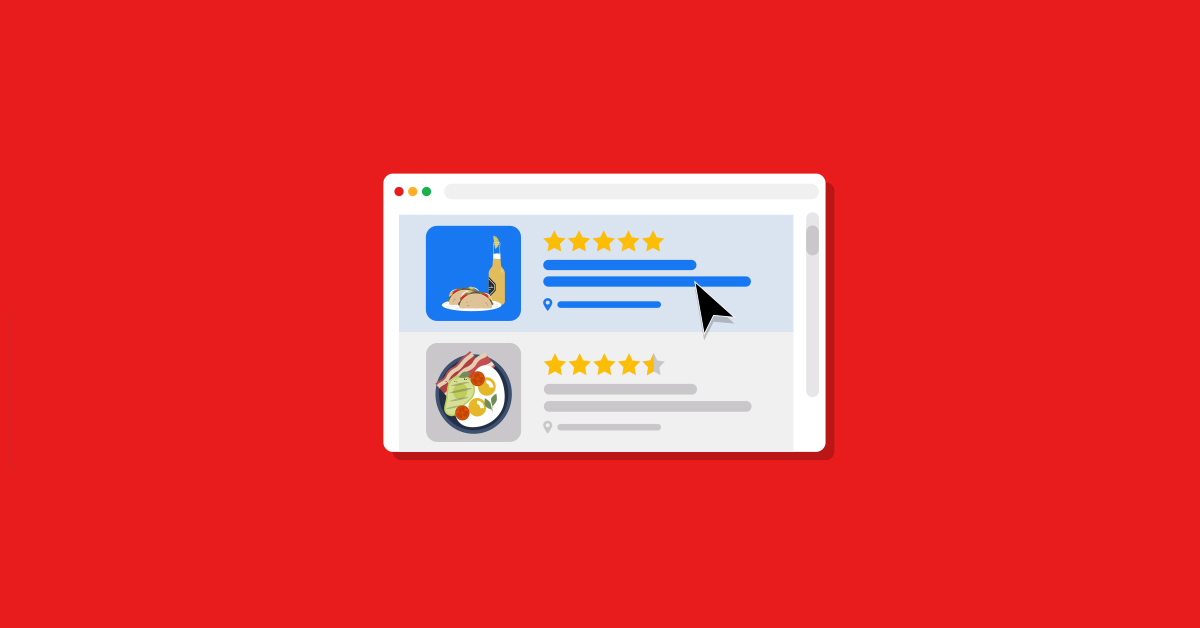The landscape of the restaurant industry is one that exists both in the physical and the abstract: it’s both brick & mortar and online and it’s vital to master the nuances of both to ensure success. Online, customer reviews hold the power to make or break your business. So many of today’s diners rely on online feedback to choose their next restaurant, so having a solid system to collect, manage and respond to reviews is crucial.
We sat down with David Blakers, Managing Director, Asia-Pacific at InMoment , the leading integrated customer experience platform, to discuss how restaurants can use ReviewTrackers – an InMoment company – to increase online reviews volume, foster a stronger brand perception online and acquire more customers organically.
- Understand why reviews are so important to your success
- Your QR codes are instant review collectors
- Automated review requests give you consistent feedback
- Personalised responses create lasting loyalty
- Your negative reviews can help to refine your operation
- Your response to a review matters more than you think
- You should amplify your best reviews on social media
- Turn your reviews into customer data for staff training
- Review aggregation tools mean seamless management
- Your brand will flourish
Need tips on handling bad reviews for your retail business instead?
Read our blog on how to respond to negative retail reviews.
1. Understand why reviews are so important to your success
Google reviews are one of the most important factors for getting your restaurant discovered by potential diners. In today’s digital landscape, if your restaurant lacks a strong Google presence, it may as well be invisible. According to ReviewTracker’s findings, with 55.5% of consumers relying on online reviews to choose where they dine, and 22% saying they will not dine at a restaurant after reading a negative review, your Google reviews play a crucial role in building trust with new customers. A single negative review can potentially cost your business 30 customers, so managing and optimising these reviews is essential.
David Blakers: “People have so many options to choose from that the only way to be confident in their choices is to read peer reviews. The more you pay attention to customer reviews, the more you can influence your restaurant’s reputation.”
2. Your QR codes are instant review collectors
QR codes aren’t just for menus anymore. By placing them on table tents, checks, or at the register, you make it incredibly easy for customers to leave reviews while they’re still savouring their meal. This quick-access method catches feedback when the experience is still fresh, making it more likely that reviews are positive and detailed.
David Blakers: Get creative—drop a QR code on the table tent or at the bottom of the receipt that lets them review right from their phone while they’re still feeling the afterglow of that amazing dessert.
3. Automated review requests give you consistent feedback
Waiting for organic reviews can be a slow game. Implementing automated review requests through email or SMS lets you continuously generate customer feedback without having to manually ask. A well-timed follow-up, especially if you personalise it, can lead to a steady flow of reviews that reflects your restaurant’s strengths.
David Blakers: “Customers are more likely to leave a review if you make it ridiculously easy. Think post-meal emails or SMSs with a quick “How did we do?” and a link to leave feedback. The trick is automating and systemising review collection to enable your restaurants to grow their review quality and volume systematically.”
4. Personalised responses create lasting loyalty
Too many restaurants rely on generic “Thanks for your review” responses. Personalisation is key. Address the customer by name, mention what they specifically enjoyed, and suggest a dish for their next visit. This shows your attentiveness and encourages them to return.
David Blakers: A personalised response shows you’re paying attention. Something like: “Thanks, Alex! We’re thrilled you loved the seafood risotto. Next time, try the tiramisu—it’s a house favourite!”
This kind of engagement isn’t just good manners—it’s a subtle invitation to return.
5. Your negative reviews can help to refine your operation
Negative feedback can sting, but it’s also one of the most useful tools for improvement. Treat complaints as learning opportunities. A pattern of feedback around slow service or inconsistent dishes could indicate training issues or areas for streamlining processes.
David Blakers: Negative reviews offer you a chance to fix what went wrong and win back the customer. By keeping an eye on reviews and addressing problems early, you not only salvage customer relationships but show others that you’re proactive about improvement.
6. Your response to a review matters more than you think
It’s not just what you say in a response, but how quickly you say it. A prompt reply shows that you care about resolving issues, even if the feedback was harsh. Always maintain a calm and professional tone, and invite the reviewer to take the conversation offline to address the issue privately.
David Blakers: “Acknowledge the issue—speed matters here. Stay calm and professional, even if the review seems unfair. Remember this response is public. Don’t be afraid to apologise and own it, even if the issue seems small, an apology goes a long way. Offer to make it right. Invite the customer to contact you directly, so you can turn their experience around.”
7. You should amplify your best reviews on social media
Your most enthusiastic reviews are golden for marketing. Sharing these on your social platforms not only builds credibility but also celebrates your top reviewers. Potential diners who see peer recommendations are more likely to choose your restaurant over others.
David Blakers: “Promote your positive reviews. Don’t be shy about sharing the good ones! They help build trust with future customers and highlight what you’re doing right.”
8. Turn your reviews into customer data for staff training
Your customer reviews are a treasure trove of data that can be used for continuous improvement. Regularly analyse patterns in feedback to pinpoint areas that need attention—whether it’s food quality, ambience, or service speed—and use that data to guide staff training.
David Blakers: “Those reviews you’re collecting? They’re not just for show. Dig into them to uncover recurring themes. Are people raving about your service but not the food? Time to chat with the kitchen team. Do they love your pasta but hate the wait times? Look into staff training or tweaking your reservation system. By using reviews as a tool, you can continuously improve and deliver experiences that keep people coming back.”
9. Review aggregation tools mean seamless management
Tracking reviews across platforms like Google, Yelp, and TripAdvisor manually is both time-consuming and inefficient. Use review aggregation tools to manage all feedback from a single dashboard, allowing you to spot trends and respond swiftly.
David Blakers: “Trying to track your reviews across multiple platforms manually would be a full-time job. Review aggregation through ReviewTrackers simplifies this by helping you manage all your reviews from different sites (Google, Yelp, TripAdvisor, etc.) into one easy-to-read dashboard. This way, you can keep all your business locations across all major review sites updated, automatically request and respond to reviews easily, and gain competitive insights to grow your restaurants organically. It’s a time-saver that helps you stay on top of your restaurant’s reputation and allows for more strategic, timely responses.”
10. Your brand will flourish
Utilising a review management platform does more than just streamline feedback management—it empowers you to harness the full potential of customer data to shape your brand and improve satisfaction. By understanding the data within your reviews, you can uncover deeper insights into customer preferences, spot recurring feedback trends, and refine your menu or service accordingly. This allows you to tailor your restaurant’s offerings to meet customer expectations while ensuring consistent, positive experiences. The result is not only higher customer satisfaction but also a stronger, data-driven brand identity that resonates with diners.

News you care about. Tips you can use.
Everything your business needs to grow, delivered straight to your inbox.


